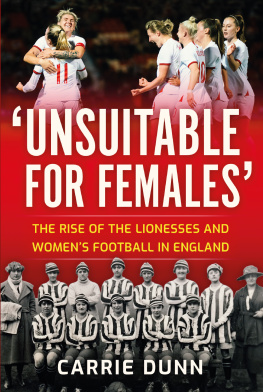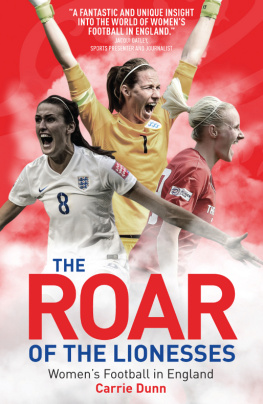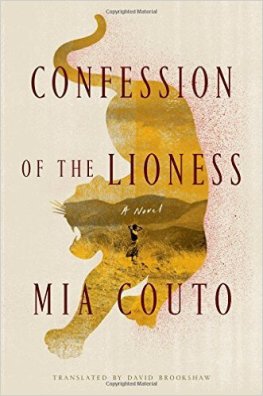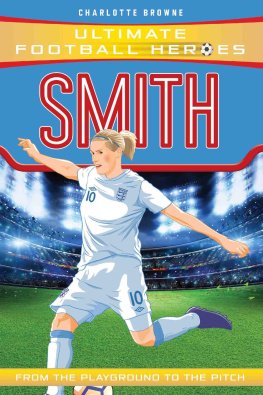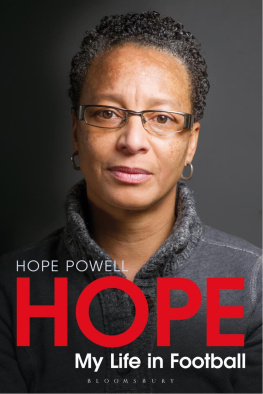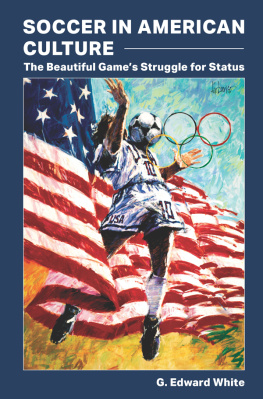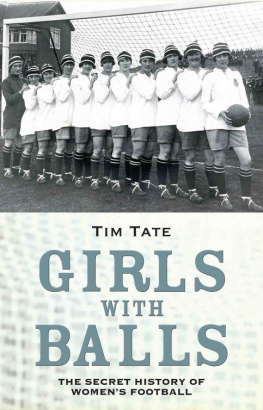Contents
Guide
UNSUITABLE FOR FEMALES
CARRIE DUNN IS A JOURNALIST and academic who has been combining research, teaching and professional practice since 2005. Her research interests include fandom, sport, feminism and the consumption of popular culture. She has covered the last three Womens World Cups for The Times and Eurosport, and has worked in-house regularly for both as well as the Guardian and other publishing houses.
She was UEFAs London correspondent for the postponed 2020 European Championships, liaising with tournament organisers, ambassadors and syndication partners. Her most recent book is The Pride of the Lionesses (2019), which was long-listed for Football Book of the Year at the Telegraph Sports Book Awards in 2020, named one of FourFourTwos best books of the year, and the sequel to The Roar of the Lionesses: Womens Football in England (2016), one of the Guardians best sport books of 2016.
PRAISE FOR CARRIE DUNN
No one is better placed to deliver an X on the state of womens football in this country than Carrie Dunn
FourFourTwo
Carrie Dunn is an exceptional journalist, perceptive and inquisitive
Iain MacIntosh, Muddy Knees Media
Carrie Dunns razor-sharp way with words and clever analysis of womens football history are worth paying attention to. Her personality shines through in the work she undertakes. You cant keep her quiet... but then youd never want her to stay silent for too long!
Kait Borsay, Offside Rule podcast
Dunns meticulous research and careful choice of words leaves the reader entertained and informed in equal measure
Matt Davies-Adams, commentator and broadcaster
Insightful, thoughtful, and fascinating
Alex Stewart, Tifo Football, on Pride
Crisp and humane writing. I wish I had the psychic or persuasive powers to push The Roar of the Lionesses up on to the bestseller lists. A book that is rooted in the joy and pain of sport. Not only do the girls know how to play football as well or better than the boys; the best of em write about it just as well as the boys do too
By The Book Reviews
Rivetingly insightful and beautifully researched
Football writer Julie Welch on Roar
First published in 2022 by
ARENA SPORT
An imprint of Birlinn Ltd
West Newington House
10 Newington Road
Edinburgh
EH9 1QS
www.arenasportbooks.co.uk
Copyright Carrie Dunn, 2022
ISBN 978 1 91375 905 6
eBook ISBN 9781788855044
The right of Carrie Dunn to be identified as the author of this work has been asserted by her in accordance with the Copyright, Designs and Patents Act 1988.
All rights reserved.
Every effort has been made to trace copyright holders and obtain their permission for the use of copyright material. The publisher apologises for any errors or omissions and would be grateful if notified of any corrections that should be incorporated in future reprints or editions of this book.
British Library Cataloguing-in-Publication Date
A catalogue record for this book is available on request from the British Library.
Designed and typeset by Biblichor Ltd, Edinburgh
Printed by MBM, East Kilbride
To Henry and Emilia
CONTENTS
PROLOGUE
THE BEGINNING
THIS IS THE BOOK PEOPLE keep asking me to write.
After covering the Womens World Cup in 2015, I wrote The Roar of the Lionesses, following a season in the life of womens football in England. Four years later, I wrote the sequel, The Pride of the Lionesses, exploring what if anything had changed.
With both books, I stressed that I wanted to give a snapshot of life at all levels of the game. I wasnt going to just focus on the England team or the superstars of the Womens Super League. I wanted to tell the stories of the women all the way down the pyramid: their daily routines, their sacrifices, their love of football.
I tried to give a sense of the vast history of womens football as well. The late Sylvia Gore, ambassador for Manchester City, spoke to me for Roar; Gillian Coultard, long-time England captain, wrote the foreword. Two legendary goalkeepers played a big part in Pride, with Rachel Brown-Finnis writing the foreword and her predecessor between the England sticks, Pauline Cope, sharing her memories of her playing and coaching career.
But there are so many more stories to be told, reaching back over more than a century. Decades of football history have been obscured by record-keeping so limited or non-existent that great footballing careers have simply disappeared from view. Understandably, governing bodies and players prefer to focus on the here and now, pointing to current achievements rather than looking back at the challenges that were faced by previous generations.
I argue that it is crucial to know and understand the past. Its a truism that those who forget history are doomed to repeat it. However, it is also true that to remember the women footballers who blazed their own trails in their own ways is to shine a different light on todays game; it shows how complex and storied womens football is and always has been. Scratch the surface, and uncover a fascinating tangle of lives.
ONE
THE RINGLEADER
ITS A GLORIOUS NAME NETTIE Honeyball.
She is the woman who led the British Ladies in their famous fixtures at the end of the 19th century.
There is just one problem, though. Nettie Honeyball never existed no matter what variant spelling you try, there are no records of such a person.
The 19th century was a time of social change, particularly when it came to sport. But it was a very male, macho sporting sphere, and there was an idea that physical strength, religious conviction and ones ability to take on power and be a successful, strong leader were all interlinked. It all stemmed from the public school system where boys were encouraged to take up a sport to make them stronger and more manly, suitably equipped to take up a role in governing the expanding British Empire.
Organised football in a format a modern-day spectator would recognise stems back to 1863, when the Football Association was formed. The founder of Barnes FC, Ebenezer Morley, had suggested to the press that there should be a way to establish the rules for football, just as the Marylebone Cricket Club (better known as the MCC) had done for cricket. In a meeting at the Freemasons Tavern in Great Queen Street, captains, secretaries and creators of football clubs in the London and South East area formed their association with the intent to regulate the game rather than playing matches by their own rules, which might vary by region or by school background, as had happened previously.
Sheffield FC has a claim to creating the first-ever set of rules for football, with founders Nathaniel Creswick and William Prest drawing up their own code known as the Sheffield Rules in October 1858, publishing them the following year. Even though rules were available, that did not mean every club adopted them. Sheffield FC became members of the Football Association in 1863, but still used their own rules and occasionally the quirky rules of opponents, with their first fixture outside Sheffield coming in 1865 against Nottingham. It was not an 11-a-side encounter, though, as might have been expected; rather, there were 18 players on each side.

